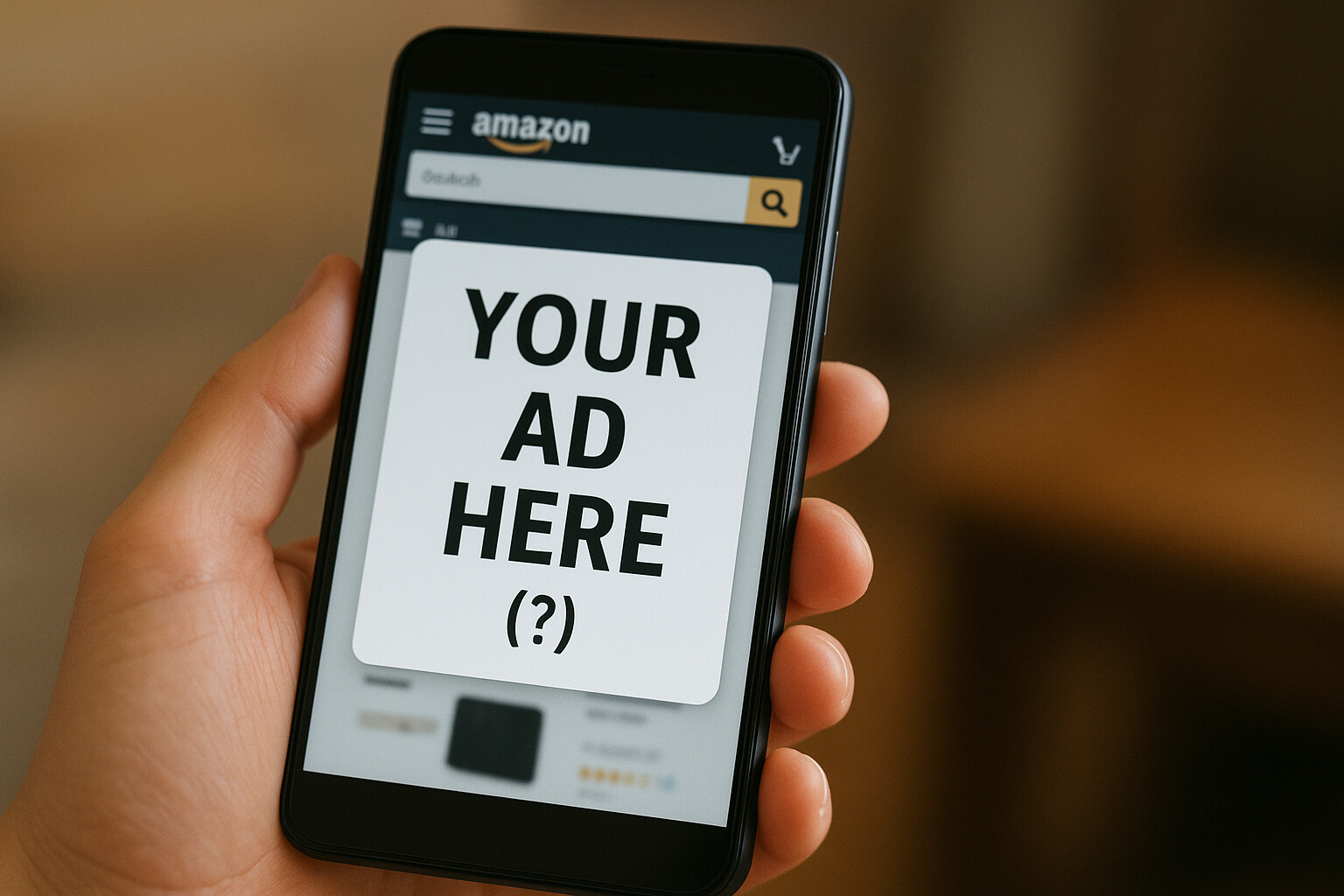Your own Amazon shop? Here’s how to open a seller account on Amazon [Schritt-für-Schritt-Guide]

E-commerce has rapidly developed during the pandemic. However, even now, as the growth curve flattens somewhat, online retail is still increasing. Moreover, the boundaries between German e-commerce and brick-and-mortar retail are increasingly blurring thanks to pick-up points, same-day delivery, and more. Many retailers are successfully combining online sales and offline business. If you are also eyeing online retail, then it is high time, and you cannot avoid the question of whether to start with a complete online presence or whether having your own Amazon shop is the better option.
Before you dive into wild actionism, you should take a closer look at the advantages and disadvantages of the two models of online retail. It’s like buying a car: one person is happy with a nimble mini, while another needs a spacious station wagon.
How much are you willing to invest?
Own online retail or Amazon shop – both cost money and have advantages and disadvantages. However, it is obvious that the investment in your own online shop far exceeds the costs of setting up a seller account on Amazon. You need to consider some costly decisions:
In addition, there are considerable amounts for the setup and creation of product pages, as well as high time and cost expenditures for marketing, SEO, and SEA. Depending on the extent of your retail business and the goods you offer, five-figure amounts can quickly add up. Ongoing operations and necessary further development also cost money. If you opt for a cloud solution, there may be monthly base fees, transaction costs, and fees for integrating payment solutions.
In comparison, the startup costs and the time to be invested for using the Amazon sales platform are quite low. You hardly need any startup capital for your own Amazon shop, and the effort required to create listings in an established and easily discoverable ecosystem is manageable. Of course, there are costs involved here as well, but they are relatively low. However, Amazon charges fees and commissions for the presence of listings on its marketplace. The sales fees for most categories range between 7% and 15%. In addition, there is a monthly fee of 39 euros.
Amazon is the most successful sales platform worldwide and provides access to a very large customer base. Nevertheless, as a seller, you need to invest a lot of work if you want to really get started. If you want to prominently place your products on Amazon, you will not be able to do without Amazon Advertising.
This comparison shows that the decision between Amazon and an online shop largely depends on whether and how many resources you have available and how long you can endure an initial dry spell.
Own Amazon Shop vs. Online Shop: Advantages and Disadvantages

The actual profit cannot be determined with the simple calculation of “selling price minus purchase price.” Competition, technical implementation, ongoing costs (storage, packaging, shipping, manpower, etc.), marketing, and customer service – all of these play a significant role in calculating profit.
In your own online shop, you are in control, no question about it. The customer is less price-sensitive, the competitor is not directly on your heels, and you retain the full profit. However, you also bear the full risk: Will your investments in building the shop pay off? Can you attract enough customers? Do logistics and fulfillment work? With your own online shop, ideally, you can build your brand and retain loyal customers, but this is very resource-intensive.
Now to your own Amazon shop.
On the marketplace, thousands of online retailers are competing, so the competitive pressure is extremely high and the customer is price-sensitive! The offers are often very similar, and in this situation, the price often decides – however, not necessarily the lowest, as a study from Northeastern University Boston has already proven. The seller’s rating profile, fast delivery, and a favorable selling price significantly contribute to the profit of Buy Box on Amazon. Because some of these tasks can be covered by the marketplace’s own service Fulfillment by Amazon. You also do not have to manually configure the price; it can be easily and fully automated adjusted to the market situation through the use of a Repricer.
Digression: What is the Buy Box?
The Buy Box, in German shopping cart field, is a visually striking yellow box with the inscription “Add to Cart,” which you can see on every Amazon product detail page. The Buy Box guarantees high visibility of the respective online retailer’s items and thus optimizes sales figures on the marketplace. Only one retailer appears with their product in the Buy Box and captures all sales, which account for about 90% of transactions through the shopping cart field. Given this prospect, placement behind the small yellow button on the product detail page is correspondingly sought after among online retailers.
Of course, all of this also costs something. Even though fees and commissions reduce the profit on individual items, they also have a positive aspect: they are reasonably predictable in the medium term. Otherwise, when selling on Amazon, you remain on the safe side. You pay fees, and in return, you can rely on the software running and the processing working. No surprises.
Overview of the Advantages and Disadvantages
To make your choice a little easier, we have summarized all aspects of the two business models in the checklist below.
| Criterion | Own Online Shop | Own Amazon Shop |
| Startup Investments | The initial investment in your own online shop can quickly reach five-figure amounts depending on your retail business. There are several costly tasks ahead: selection and configuration of the shop system, setup and creation of product pages including texts and images, as well as high time and cost expenditures for marketing, SEO, and SEA. | Setting up your own Amazon shop is straightforward and does not require huge investment costs. The time to be invested in using Amazon is manageable, and the effort required to create listings in an established ecosystem is relatively low. |
| Ongoing Costs | If you opt for a cloud solution, there may be monthly base fees, transaction costs, and fees for integrating payment solutions. There are also corresponding costs for a self-developed online shop for implementation, ongoing operations, inventory management, packaging, shipping, marketing, customer service, and the necessary manpower. | Amazon charges fees and commissions for selling products. For most product categories, the sales fees are around 15%. In addition, there is a monthly fee of 39 euros. Advantage: Amazon takes care of technology, storage, fulfillment, customer service, etc., on your behalf. |
| Marketing | Prepare yourself for a dry spell right at the beginning. To make a new online shop known, you should expect high time and cost expenditures for advertising, social media, marketing, SEA, etc. However, these will pay off in the long run. | Amazon is THE search engine for online shopping. The sales platform provides access to a very large customer base. However, your items cannot be sold on their own. You can achieve a faster start by prominently placing your listings through Amazon PPC. |
| Scope for Design | You have full control over your brand image – shop layouts, product design, additional features for customer retention, etc. are entirely in your hands. | On Amazon, you have somewhat rigid structures and can hardly change the product description (e.g., for commercial goods). However, if you want more flexibility, you can also register your own brand. |
| Brand Building and Customer Retention | Customer retention and brand building are in your hands – with good product quality, friendly service, fast delivery, and reliability, customers remember your name and buy from you again. | Customer loyalty belongs to Amazon, not to you as an online retailer. Here, only the best price, the best rating profile, and the best service matter. |
| Profit and Margin | The profit margin in an online shop is known to be higher than when selling on Amazon. However, many costs cannot be broken down into individual transactions. Only when calculating revenues and expenses can the actual margin be determined. | The fees and commissions reduce the profit margin of individual items, but they are reasonably predictable in the medium term. By automating certain processes, such as price adjustments, the Buy Box can also be won with a higher price. |
Open Your Own Amazon Shop – Step by Step to a Professional Seller Account

We assume that you already have a user account with Amazon. Most online shoppers have ordered something from Amazon at some point. If you do not have a business or an account registered with Amazon, you should tackle these two steps first.
If all information has been entered correctly, you can now complete the process by clicking on “Complete Registration.” Your seller account is now created, and you can start filling your own Amazon shop with products. However, it will take some time before you can list products and actually trade, as Amazon first reviews all information and documents.
FBA vs. FBM
Having your own Amazon shop also raises the question of whether you want to use Fulfillment by Amazon (FBA) or handle logistics yourself – referred to as Fulfillment by Merchant (FBM) on Amazon. At first glance, this seems like a big decision, but upon closer examination, it should turn out to be easy to answer for most newcomers.
If you have your own logistics including storage, picking and packing, customer service, and returns management, and you can ensure fast delivery, then shipping via FBM on Amazon could also be an option for you.
If this is not the case and you would need to build such structures, then FBA is likely the better choice for you at first. If you use the FBA program, then you send your goods to an Amazon warehouse and take care of marketing your products. Amazon, on the other hand, handles the fulfillment:
This is very convenient and especially helps smaller sellers ensure a high fulfillment quality, which is difficult for new Amazon sellers with self-shipping to achieve.
Disadvantages of FBA
Of course, FBA also has disadvantages for your own Amazon shop. Corresponding fees for the service are deducted per order, which must be taken into account in the pricing calculation to ensure an adequate margin. Additionally, mistakes can also happen at Amazon – so-called FBA errors. For example, products may be damaged during the shipping process, making them unsellable. The seller, who ultimately owns the item, is entitled to compensation for this. Unfortunately, Amazon does not reliably reimburse on its own responsibility, so sellers theoretically have to take care of the application themselves.
Fortunately, there is a simple solution on the market for this. With SELLERLOGIC Lost & Found Full-Service, the refund management becomes a breeze: no hours spent reviewing FBA reports, no tedious gathering of all information for a case, no copy-and-paste into Seller Central, and above all, no nerve-wracking communication with Amazon.
Learn more now about how Lost & Found can make your work as an Amazon seller easier and additionally improve your profitability.
Conclusion: Is having your own Amazon shop a good idea?
Our society is changing sustainably: The leisurely window shopping has long been off the weekend agenda for many people. Instead, we browse the offers on Amazon in the evenings after work. Creating your own store is easier than you might think.
Whether you are planning a complete online presence or prefer to open your own Amazon shop depends on many factors. However, the pandemic has shown that diversification is important. So why not start with your own Amazon shop to get to know the e-commerce business, and then gradually build your own online shop?
Because especially in the early stages of your e-commerce career, Amazon offers many advantages. Here, you can gain experience without spending huge amounts on building your own online presence. You also do not have to worry about technology and marketing as an online seller. The fees and sales commissions are also predictable over a longer period while maintaining consistently excellent quality for logistics and fulfillment. Once you have gained enough experience, you can take the next step towards your online shop.
Frequently Asked Questions
Theoretically, anyone can make money with Amazon, as Amazon FBA can also be started with a starting capital of a few hundred euros. However, to build a financially independent business that is self-sustaining, some investments are required. These are still lower than if you want to set up your own online shop with complete logistics.
Interested parties go to the Amazon website and select the link “Sell on Amazon” in the “My Account” section. Subsequently, a personal Amazon shop can be opened. Information such as company name, contact details, and credit card information will be required.
Private sales are possible on Amazon, but rather unusual. Instead, platforms like eBay or classifieds have become established for this purpose. A registration as a seller is also required on Amazon.
A professional Amazon seller account currently costs 39 euros per month. In addition, there are commissions per sold item, which range from seven to 15 percent depending on the category.
Yes, in principle, this is possible for both private individuals and commercial sellers. All that is needed is an Amazon account and a credit card.
Yes, because having your own Amazon shop is a must in e-commerce. Almost every online shopper has purchased something on Amazon at least once, most have access to an Amazon account, and around 50% of all German households have an Amazon Prime subscription. Selling your own products on Amazon is therefore a no-brainer.
Image credits in the order of the images: © PixieMe – stock.adobe.com / © AI Farm – stock.adobe.com / © PixieMe – stock.adobe.com










